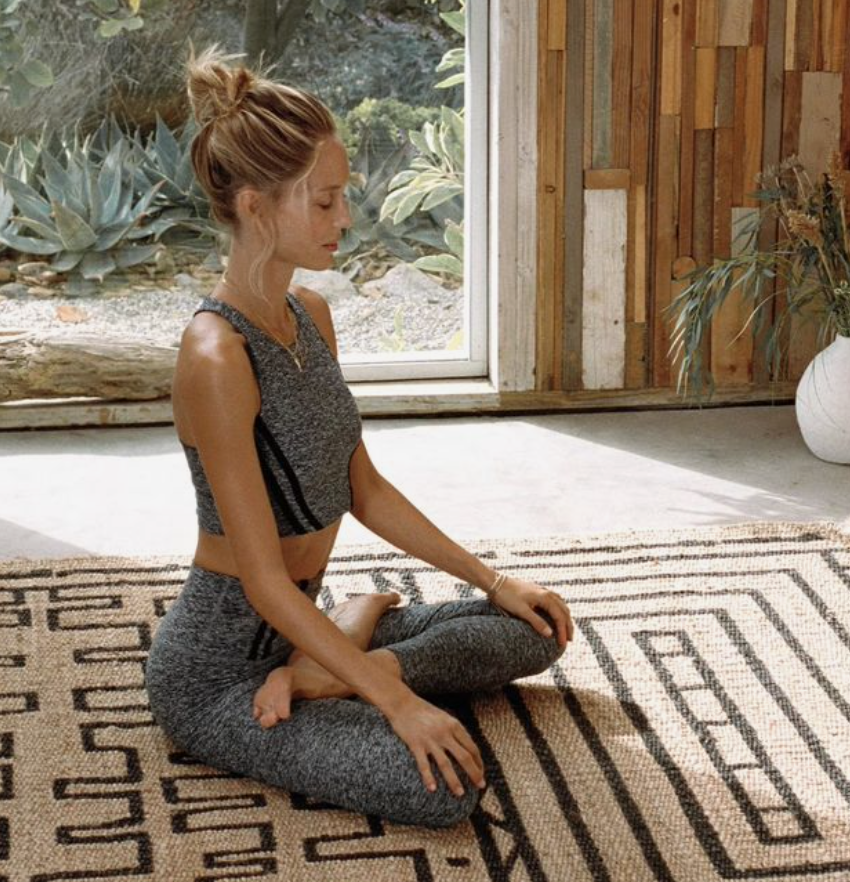Creating a dedicated yoga space in your house can help you improve your overall physical and emotional health as well as improve your fitness.
The home practice of yoga has several advantages, including saving time, money, energy, and worry.
No traffic to deal with whilst getting to class, no parking issues, not having to pay for transport, no booking or cancelling hassles, and no stress of rushing trying to get to and from a class with a busy schedule.
Creating your own Yoga space allows you to put any anxieties aside and to concentrate on your practice. Ideally, it should become a haven where you may escape the stresses and worries of the outside world.
And, you never know where this journey may take you. You may end up teaching a classes yourself one day.
Check out the top 10 ways on how to create the perfect Yoga space at home:
- Yoga Mat
If you’ve been clinging to the same Yoga mat for several years, it might be time for a new one. A fresh Yoga mat can help re-energise your yoga practice, especially when yoga mats come in such a wide range of colourful patterns and designs to help inspire.
Some brands have created revolutionary mats, such as the mat by Reformermat, who have designed their mats to help give traction, with non slip surfaces, and provide comfortable cushioning while you’re in your yoga poses.
This limited edition super LUXE Yoga mat as pictured, was designed in collaboration with the amazingly talented Sarah Malone (@sarahmaloneartist) from Western Australia, who is also an experienced yoga teacher.


- Ambient Lighting
Lighting has a significant influence on mood and feelings. If the light is too bright, it can produce headaches, migraines, and exhaustion. But when using the right type of lighting and even coloured lighting, I can help promote alertness, creativity, and attention.
Natural light that has been filtered is ideal, but if your area has small windows or you practice at night, you’ll need additional lighting.
To manage how sunlight, consider installing a dimmer switch or choosing lamps with 3-way switches. Brighter lighting is better for active types of dogs like vinyasa and ashtanga, while low lighting is better for soothing techniques like gentle, yin, and restorative. Candles and salt lamps are excellent low illumination options that promote a contemplative mind.

- Calming Colours
The colours you choose should match your yoga practice’s overall attitude and aim. For example, if you want to relax, use calming colors like blues and greens. Brighter colors, such as reds and yellows, might help you feel more energized.
Whatever your goal is, be sure the colours you choose are complementary. Choose subdued, colder tones or warmer whites for your walls, since these colors recede rather than drawing attention to themselves. Small furniture or props can be accented with brighter, more dramatic colors.

As an additional option, you can consider installing a wall prints canvas that will fit your interior style and still be calming for your yoga studio. The wide range of available options will make it easier to choose the art that is the most suitable for the space.


- Relaxing Scents
Start by lighting a fragrant candle, igniting an incense stick, or misting yourself with essential oils to sanctify your at-home yoga area. Just be careful not to overdo it as too much scent or smoke could overwhelm you or even impair your breathing.
Choose your scents carefully, as each has a particular emotional effect. Sweet scents appeal to certain people, while spicy aromas appeal to others. Experiment with different combinations until you discover the one that works best.


- Add Some Plants
Mindfulness, calmness, and peace of mind are all enhanced by being among plants and tending to them. Plants also assist in cleansing the air in your house, which is particularly useful during pranayama and complex sequences.
Choose houseplants that thrive in the amount of light available in your home. Succulents, cactus, snake plants, spider plants, and ferns are low-water plants to consider if you don’t have a green thumb.


- Good Ventilation
This may be a spare room, a portion of the lounge room, or an under-utilized space in your house; the important thing is that the ventilation in that room should be near-perfect to inhale and exhale fully. A 20-square-foot home yoga studio with few windows and a large floor surface is an excellent starting point.
If you are looking to launch a yoga studio at home where you can teach to clients, and you have an attached bathroom with your yoga studio, it’s a plus. Make sure you contact a reputable bathroom renovation company if you need to add such facilities, should you decide you wish to start teaching yoga at home.
Having access to the washroom to bathe and detoxify after your yoga session is fantastic, and means you can enhance your practice.
A plumber can help you set up a shower or bathroom facility at home and work out where your plumbing is if you want a bathroom as part of your set-up.

- Quiet Surroundings
Noise can disrupt concentration and meditation levels while doing yoga, it is essential to restrict outside sound, silence mobiles, and be less talkative. Thick blankets, rolling pads, carpets, or quilts can cover the walls. Any soft material will do; however, thicker fabrics will absorb more noise than thinner ones.
Fasten noise-absorbing panels to the walls and, if required, the ceiling if you don’t mind the space taking on an industrial aspect.

- The Right Music
Music might help you relax and focus during your meditation or yoga session. Select music that both motivates and calms you. Although meditation music is often pleasant and tranquil, there are many other forms of music that might help you relax.
Depending on the size of your location, a small or medium-sized Bluetooth speaker should give you adequate volume.

- Add a Mirror
Any yoga studio or home practice room would benefit from a full-length mirror. A large one will allow you to view yourself well, giving you a better notion of how your alignment appears.
As you do your postures, you will feel more conscious and secure. Being able to practice new yoga positions in front of a mirror is beneficial. Large mirrors might be costly, but they assist in creating a genuine yoga studio atmosphere.

- Inspirational Interior
The concept is simple: discover something beautiful to inspire you, whether it’s a painting, sculpture, or photograph. This might be anything from a work of art to a snapshot of a friend, guru, or relative. It doesn’t matter what it is; all you have to do is look at it and consider why it makes you so pleased.
Candles can also help you relax when meditating or doing asanas. Purchase high-quality, drip-free, and smoke-free candles. Use all-natural soy candles instead of paraffin wax candles since they burn cleaner.

Any time you return to your practice space or yoga studio, it should seem new and fresh. After each session, make it a point to put your accessories away and clean up the area. Make sure you clean the studio, such as your mat and props, on a regular basis.

